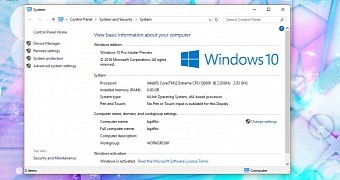Windows 10 Threshold 2, which was released only a few days ago, has become the new default, which means that should you decide to upgrade from Windows 7 or 8.1 to Microsoft’s new operating system, you get straight to this particular version, and not to the RTM launched in July.
This is actually a good thing, given the fact that Threshold 2 comes with so many great improvements, but in case you decide to downgrade for any good reason, you might not be able to do it.
A report published by The Inquirer reveals that, in some cases, the Windows 10 Threshold 2 update removes the rollback partition, which means that you won’t be able to downgrade to your previous versions of the operating system.
Removed after a forced upgrade?
While there’s no clear reason why the partition is removed, the aforementioned source speculates that it’s all because of the limited amount of space. Either way, since this partition is no more, going back to a previous Windows version is impossible, which means that Microsoft’s promise that you could downgrade in the first 30 days after installing Windows 10 isn’t valid anymore.
Redmond doesn’t say it specifically, but the downgrade option might indeed be missing from computers running Threshold 2. This is, in fact, one of the reasons some PCs aren’t getting Threshold 2 in the first place, so the chances are that you actually force-upgraded with an ISO or with the Media Creation Tool if the rollback partition is no longer there.
“If it’s been less than 31 days since you upgraded to Windows 10, you won’t get the November update right away; this will allow you to go back to your previous version of Windows if you choose. After the 31 days have passed, your PC will automatically download the November update,” Microsoft says.
We’ve also reached out to Microsoft for more information on this and will update the article should an answer be provided.

 14 DAY TRIAL //
14 DAY TRIAL //